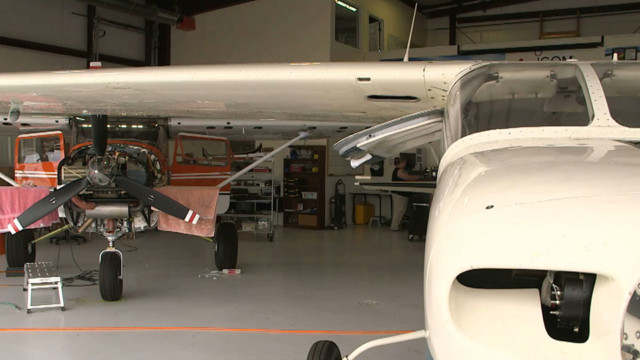Low unemployment in the U.S. may be a sign of a strong economy but it’s also bringing challenges to many companies. They are struggling to fill open positions. And that’s causing some to turn to teenagers to get the job done.
CGTN’s Hendrik Sybrandy reports.
It was Career Day at his middle school that first brought Thayer McCollum to Avionics Specialists. Later, he asked for a summer job at the company and got one.
“That first summer after my freshman year, I mowed the lawn and I cleaned the hangar one day a week,” McCollum said.
As Thayer progressed through high school, his job responsibilities at the Loveland, Colorado firm increased.
“I had skills that were needed,” he said.
Today, the 17-year-old builds instrument panels for aircraft, work an adult employee would ordinarily have done in the past, but these are no ordinary times for the U.S. economy.
“The ‘help wanted’ sign is out, that’s for sure,” said Jerry Stooksbury, Avionics Specialists’ Owner, adding that he could use a few more qualified people.
“Oh yeah, I mean I woke up this morning going, you know if I had one more person, because I’ve got a backlog schedule, man if I had more person, then I’d be able to do this,” Stooksbury said.
At a time when the U.S. unemployment rate is below 4 percent, one indicator of a strong economy, employers across America are facing similar dilemmas.
“You would like to expand and grow because you see growth in the economy for the first time in quite a while but you can’t because you don’t have the labor necessary,” said Cindi Fukami, a Professor of Management at the University of Denver’s Daniels College of Business.
Whether it’s a lack of skilled labor, people dropping out of the workforce or retiring baby boomers, companies in places like Colorado, where the unemployment rate is a mere 2.9 percent, are scrambling to hire.
“We’re trying different methods, different recruitment firms, different on-site postings,” Stooksbury said.
Teenagers have helped fill the labor gap although the owner of Saddleback Golf Club in Firestone, Colorado pointed out that some of them haven’t quite learned how to work.
“When they start off they’re going great balls of fire and towards the end of the season you’ll find them hiding behind the rain shack hitting balls and getting out on the course and looking scarce,” said Whitey O’Malley.
He said a higher minimum wage has also led him to cut some positions. Still…
“I don’t know anybody that’s not looking for help right now,” O’Malley said. “It is frustrating, extremely frustrating.”
“It’s kind of like fasten your seat belts and get ready cause it’s going to be an interesting ride,” Fukami said.
She thinks the U.S. economy is at a critical point. She said more funding for science and tech education as well as job training will be key to solving the labor problem. Otherwise, she argued, the U.S. simply won’t be competitive.
“If you can add more qualified people, then you’ll be able to produce more,” Stooksbury said.
The lack of available workers has worked to Thayer’s gain.
“I think it’s a little crazy,” he said of the labor shortage.
Soon he’ll be off to college to study biomedical engineering, leaving another job opening for his boss to fill.
 CGTN America
CGTN America

